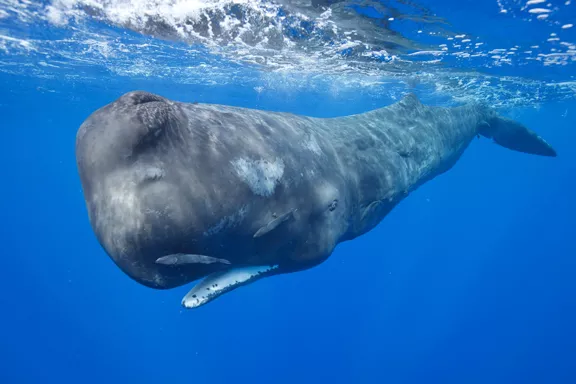Do sperm whales have a culture?
Differences in patterned clicks of sperm whale communication may lean towards culture rather than genetics. Findings could influence conservation efforts; instead of solely focusing on the animals’ habitat, protection should also consider which dialect they use.
Researchers have discovered that differences in the patterned clicks of sperm whale communication may lean towards culture rather than genetics. A study published in Behaviour Genetics suggests that sperm whale groups are made up of individuals that use the same dialect, rather than those that come from a similar area of the Pacific.
In the Pacific, sperm whales belong to one of five clans. Each use a different dialect made up of a different handful of similar Morse code-like patterned clicks called codas. The clicks may be employed to communicate that they belong to a particular pod and to maintain social bonds. The whales create the sounds in the “big tub of oil at the front of their huge heads”, explained Luke Rendell from the University of St Andrews. Along with air sacs in the whales' heads, the structure produces multiple pulses, just fractions of a second apart.
Culture or genetics?
Rendell contemplated whether the difference between clans was down to genetics. “What are the genetics of these populations? Are these dialects culturally transmitted or genetic?” Rendell and colleagues from the US and Canada analyzed DNA from the sloughed skin of 194 sperm whales belonging to 30 different social groups from three of the vocal clans across the Pacific Ocean.
Once the dialects were biologically determined, it was surmised that those sharing the same dialect would have similar genes. Instead, they found that whales with different repertoires of codas are often genetically similar, suggesting that the genetic differences don't explain clan differences and that dialects must be passed down through the generations. Not only do the clans possess different dialects, they also had different hunting patterns, parenting habits, and reproductive rates.
“All the evidence for culture relies on methods of exclusion. It's very difficult to actually prove cultural transmission,” stated Rendell. “But our finding isn't consistent with anything other than cultural dialects.”Findings from this research could help influence conservation efforts; instead of solely focusing on the animals’ habitat, protection should also consider which dialect they use. “We hope our finding will get people thinking about conservation, and the idea that behaviour in marine mammals is culturally determined,” Rendell said.
It's very difficult to actually prove cultural transmission.. “But our finding isn't consistent with anything other than cultural dialects.
—Luke Rendell, University of St Andrews

























